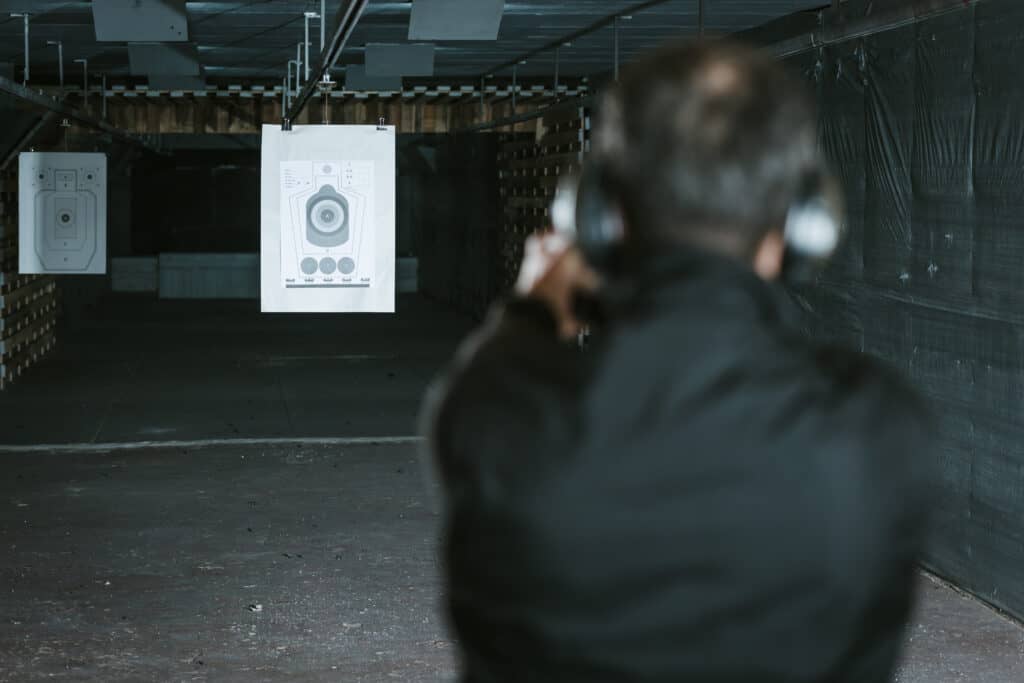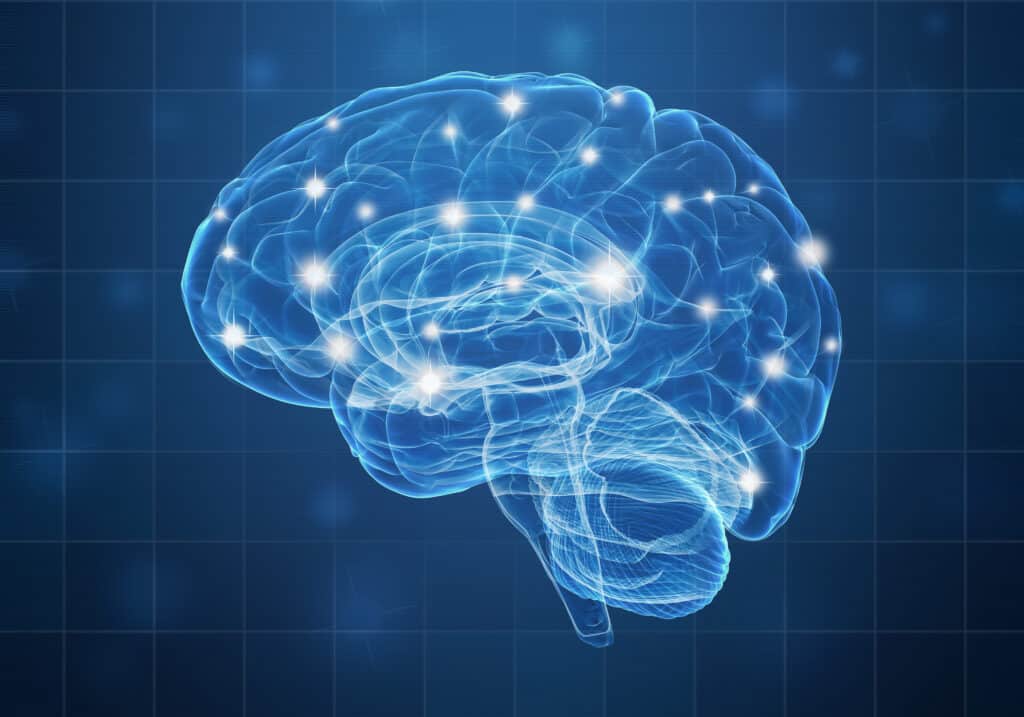The human brain is a complex and powerful organ, responsible for processing vast amounts of sensory information every moment. Understanding how the brain processes information has many practical applications, especially when it comes to creating preparedness training for various situations, such as handling firearms or responding to emergencies. By harnessing the principles of cognitive science, training techniques can be optimized to improve memory, situational awareness, and decision-making in high-stress environments.
To create effective preparedness training, it’s crucial to consider the various cognitive processes at play during information processing. These include perception, attention, memory, and decision-making. By designing training exercises that take these cognitive processes into account, important skills can be developed more efficiently, preparing individuals for real-life scenarios where they may need to respond quickly and effectively.
For instance, in the context of firearms training and emergency response, trainers can incorporate scenarios that mimic real-world situations with varying degrees of complexity. This allows trainees to develop their skills in a controlled environment, gradually increasing the level of difficulty as they become more proficient. By taking into account how the brain processes information, such training methods can lead to better performance in critical situations, ultimately enhancing personal and public safety.
Understanding the Brain
Components of the Brain
The human brain consists of several key components, including the cortex, pons, and various cells. The cortex, the outermost layer of the brain, is responsible for higher cognitive functions such as decision-making, reasoning, and sensory processing. The pons, a part of the brainstem, plays an essential role in relaying information between different parts of the brain and is involved in many basic functions such as sleep and breathing.
Brain Cells and Neurons
The brain is made up of various cells, including nerve cells or neurons. Neurons are specialized cells designed to transmit information through electrical and chemical signals. They have three primary parts: the cell body (which contains the nucleus), dendrites (branch-like structures that receive information), and an axon (a long tail-like structure that transmits information to other neurons).
In total, the human brain is estimated to contain about 86 billion neurons, which form complex networks to process and store information.
Sensory Information Processing
Sensory information plays a vital role in preparedness training, as it helps individuals understand and respond to their surroundings. The brain processes sensory information from various sources, such as vision, hearing, touch, taste, and smell. This information is first processed in the thalamus, a region that acts as a relay center, before being sent to the cortex for further analysis and integration.
The cortex is organized into distinct regions known as sensory areas, which specialize in processing different types of sensory information. For example, the primary visual cortex processes visual information, while the primary auditory cortex is responsible for processing sound.
Brain Processes Information
Understanding how the brain processes information is essential for designing practical training. The brain processes information through a combination of parallel and hierarchical processing. In parallel processing, multiple areas of the brain work simultaneously to process information. This allows for the rapid analysis of complex sensory input and is critical for tasks that require quick responses, such as emergency situations.
In hierarchical processing, information is processed in a step-by-step manner, with each stage building on the previous one. This method helps to integrate complex information into a coherent understanding of a situation, allowing for informed decision-making and action.
By understanding the brain’s functions and information processing capabilities, training programs can be tailored to effectively target these systems, enabling individuals to learn and respond efficiently in high-pressure situations such as firearms handling or emergency response.
Cognitive Functions
Memory and Learning
Cognitive functions are critical to understanding how the brain processes information and how we can use that to create preparedness training, such as firearms and emergency response. The foundation of preparedness training is rooted in memory and learning, as these functions allow individuals to acquire new skills, retain information, and recall that information when necessary. Memory is divided into three main types: short-term memory, long-term memory, and working memory.
Short-term memory stores information for a brief period, while long-term memory holds information for later use. Working memory is crucial for managing, manipulating, and organizing information during complex cognitive tasks. Using this knowledge of the memory types, preparedness training can be designed to enhance the retention of critical information and skills.
Logic and Decision-Making
Another crucial aspect of cognitive function in preparedness training is the use of logic and decision-making skills. These functions help individuals navigate through emergency situations rationally, evaluate potential outcomes, and make informed decisions based on available information. In emergency response and firearms training, the ability to make quick and accurate decisions is vital for the safety and effectiveness of responders.
Training programs can incorporate scenarios and simulations that require participants to analyze situations, gather information, and make critical decisions in limited timeframes. This type of training can help improve the decision-making skills of individuals, enabling them to respond more effectively in real-world situations.
Focus and Attention

The ability to maintain focus and attention during emergency situations is essential for an efficient and successful response. Cognitive functions related to attention and focus can be enhanced through structured training experiences designed to build concentration and improve situation awareness. In the context of firearms and emergency response training, exercises that place emphasis on maintaining focus amid distractions can be beneficial.
By understanding the importance of cognitive functions such as memory, learning, logic, and attention, training programs can be designed to cater to the needs and abilities of individuals in emergency response roles. Incorporating these functions in preparedness training helps ensure that responders are equipped with the necessary skills and knowledge to effectively manage and navigate through emergency situations.
Interactions of Neural Pathways
Response to Stimuli
The human brain is constantly processing vast amounts of information from various sources. One crucial aspect of this processing is the response to stimuli, which involves the neural pathways. These pathways are a complex network of neurons that transmit signals between different parts of the brain and the nervous system. When the body encounters various stimuli, such as sight, sound, or touch, the sensory receptors convert these external signals into electrical impulses that travel along the neural pathways to be processed and interpreted by the brain.
In the context of preparedness training, understanding the brain’s response to stimuli can help develop more effective training programs. For instance, firearms training and emergency response scenarios often involve high-stress situations where decision-making, motor skills, and cognitive performance need to be optimized. By implementing realistic and immersive scenarios that trigger the appropriate neural pathways, trainees can develop the necessary skills to respond effectively in real-life situations.
Interactions and Behaviors
Interactions between neural pathways play a vital role in the brain’s ability to process information and adapt to new situations. These interactions aid in the consolidation of memory, coordination of movement, and modulation of emotions. A deeper understanding of the interplay between these neural pathways can be used to improve preparedness training by tailoring training methods to enhance specific cognitive and behavioral outcomes.
For example, emergency response training can incorporate various strategies to manipulate neural pathways, such as cognitive drills, repetitive practice, and stress inoculation techniques. By engaging the appropriate neural pathways, trainees can develop more efficient behavioral responses to high-pressure situations. This can translate to better decision-making, faster reaction times, and increased situational awareness in critical incidents, such as natural disasters, shootings, or other emergencies.
The study of neural pathways and their interactions with stimuli and behaviors is paramount for creating effective preparedness training. By understanding these processes, trainers can develop programs that optimize cognitive performance and behavioral outcomes, ultimately improving the trainee’s ability to respond effectively in high-stress situations.
Sensory Perception
The human brain processes information through sensory perception, which plays a critical role in developing effective preparedness training for various situations like firearms proficiency and emergency response.
Touch and Pain Perception
Touch and pain perception are essential aspects of sensory processing that contribute to individual readiness during emergencies. Understanding the principles of touch perception can help create more realistic training scenarios and enhance an individual’s responsiveness. For example, incorporating realistic simulations of tactile sensations, such as the pressure of holding a firearm or the texture of objects in a rescue scenario, can improve overall preparedness.
Similarly, addressing pain perception in training can increase the resilience of participants. By incorporating controlled, mild levels of pain in training activities, participants can become more accustomed to stressors they may face in real-life situations, bolstering their ability to stay calm and focused under pressure.
Sight and Hearing Perception
Sight and hearing perception significantly influences preparedness in emergency response and firearms training. Visual and auditory stimuli play a crucial role in perceiving threats and responding accordingly. Training programs can use sensory stimuli effectively to heighten an individual’s situational awareness and ensure they can process their environment quickly and accurately.
In firearms training, improving visual perception can enhance shooting accuracy and target recognition. By using simulations or virtual reality to expose trainees to different lighting conditions, distances, and target movements, they can adapt their visual perception skills for a range of scenarios. Additionally, incorporating realistic auditory cues, such as gunshot noises or sounds of people in distress, can help emergency responders and law enforcement officers develop their ability to locate and react to potential threats or victims.
Taste and Smell Perception
Although taste and smell perception might seem less critical in preparedness training, they still play a role in overall sensory processing. In certain emergency scenarios, like a chemical spill or fire, it is crucial to recognize the distinct odors associated with dangerous substances quickly. Incorporating smells into training environments can help individuals identify and react to potential hazards more effectively.
Similarly, taste perception training could include identifying poisonous or contaminated substances in survival scenarios. By integrating taste and smell exercises into emergency response training, individuals can develop a more comprehensive understanding of their surroundings and potential hazards.
Overall, incorporating all aspects of sensory perception in preparedness training can lead to more effective and well-rounded emergency responders and law enforcement officers who are better equipped to handle real-life situations.
Role of Emotions and Personality
Role of Amygdala
The amygdala plays a crucial role in emotional processing and heavily influences how the brain processes information. This almond-shaped structure in the brain’s temporal lobe is responsible for the perception of emotions, particularly fear and anger. It helps individuals react appropriately to threats and ensures their survival. In preparedness training, understanding the amygdala’s function can help improve responses to emergencies.
Influence on Personality Traits
Emotions and personality traits greatly impact an individual’s behavior during high-stress situations. For example, some people may naturally possess higher levels of emotional intelligence, which refers to a person’s ability to recognize, understand, and manage their own and others’ emotions. This skill is crucial in emergency response as it can enhance decision-making, teamwork, and communication.
Personality traits, such as neuroticism, can influence preparedness training outcomes. Neuroticism is associated with emotional instability and a tendency to experience negative emotions, such as anxiety, fear, and depression. This trait can hinder a person’s ability to remain calm and make rational decisions during emergencies, hence it is vital to consider individual personality traits when designing and implementing preparedness training programs (firearms, emergency response, etc.).
Taking into account the role of the amygdala, emotions, and personality traits can significantly enhance preparedness training programs’ effectiveness. By understanding these factors, training can be tailored to improve emotional regulation and decision-making under high-stress conditions, ultimately leading to stronger and more competent responses to emergencies.
Brain and Motor Skills
Brain and Musculature
The human brain plays a crucial role in coordinating and controlling muscles to facilitate a wide range of motor skills. The brain processes information from the environment and sends signals to the muscles to initiate movements. During this process, both the cerebellum and the motor cortex are involved in the planning, execution, and adjustment of movements.
The cerebellum is responsible for fine-tuning motor movements, maintaining balance, and coordinating muscle activities. It helps in the automatic adjustment of posture and smooth execution of complex motor skills, such as handling firearms or performing emergency response tasks. On the other hand, the motor cortex is involved in the initiation and control of voluntary movements, translating the brain’s intentions to specific muscle actions.
Influence on Reflex and Motor Skills

Reflexes are involuntary, automatic responses to external stimuli, controlled by the spinal cord and, to some extent, the brainstem. These reflex actions often serve as an essential quick response to ensure our safety. For instance, a firefighter responding to high heat might instinctively withdraw their hand to avoid burns.
Motor skills, on the other hand, are the learned ability to perform complex movements that require the precise coordination of muscles and the nervous system. They can be categorized into gross motor skills and fine motor skills. Gross motor skills involve the use of large muscle groups and primarily focus on body movements and balance. On the other hand, fine motor skills engage smaller muscles to enable precise, intricate actions, such as manipulating tools, handling firearms, or tying knots. These skills often involve a higher degree of neural control, and practice is key to their effective execution.
In preparedness training for situations involving firearms, emergency response, or anything that requires quick reflexes and precise motor skills, the brain’s ability to process information quickly and accurately is crucial. By simulating relevant scenarios in practice, trainees can improve their reaction time and better control their muscles to produce desired outcomes.
The practice also aids in strengthening the neural connections that facilitate information flow between the brain and the muscles. Repeated exposure to these simulations and information-rich environments helps trainees develop what’s known as “cognitive readiness,” which describes the mental preparation needed for efficient responses in real-world situations.
Emergency Response and Preparedness Training
Understanding Stress Response
During emergencies, the human brain undergoes a stress response which can impact decision-making and reaction time. A key aspect of preparedness training is to understand this stress response and help individuals manage it effectively. This can be achieved by exposing trainees to simulated high-pressure situations, which can help improve their ability to stay calm and make sound decisions under stress. Techniques such as deep breathing exercises, mental visualization, and positive affirmation can also be employed to manage stress during emergencies.
Firearms Training
Firearms training is an essential component of preparedness training for law enforcement and security personnel. It focuses on developing proficiency in weapon handling, shooting skills, and safety measures. Instructors emphasize the importance of muscle memory, which enables individuals to quickly and accurately respond during high-pressure situations involving firearms. Trainees typically undergo repetitive target shooting exercises, scenario-based training, and lessons on firearm maintenance. The goal is to equip participants with the necessary skills and confidence to handle firearms safely, accurately, and responsibly during emergencies.
Emergency Response Training
Emergency response training covers a wide range of skill sets, depending on the specific needs of the individual or organization. These can include first aid, CPR, evacuation procedures, and incident command system protocols. Training is often tailored to the potential hazards and risks that the trainees are likely to encounter, such as natural disasters, medical emergencies, or active shooter situations. Regular practice and drills play a crucial role in reinforcing learned skills and ensuring effective emergency response when faced with a real-life crisis. The objective is to foster a confident, knowledgeable, and clear mindset, enabling trainees to act swiftly and decisively during emergencies.
Frequently Asked Questions
How does the brain process information during emergency situations?
During emergency situations, the brain processes information differently than in normal circumstances. Stress hormones, such as cortisol and adrenaline, are released, preparing the body for a fight-or-flight response. This physiological reaction can cause heightened awareness, increased heart rate, and rapid breathing. Consequently, the brain prioritizes immediate threats and focuses on essential tasks, sometimes at the expense of complex problem-solving or nuanced decision-making. It’s crucial to understand this aspect of brain function in order to create effective preparedness training.
What psychological factors influence decision-making in high-stress scenarios?
Several psychological factors influence decision-making in high-stress scenarios. Primarily, the emotional state of an individual can significantly impact their ability to accurately assess risks and make clear-headed decisions. Fear, anxiety, and panic can negatively affect cognitive processes, leading to less effective decision-making. Additionally, cognitive biases, such as tunnel vision and confirmation bias, may cause an individual to focus solely on specific details or seek information that confirms their existing beliefs, ignoring potentially crucial information in the process.
How can we enhance cognitive function for first responders and firearm users?
Enhancing cognitive function for first responders and firearm users can be achieved through targeted training and practice. Regular exposure to simulated high-stress scenarios can help individuals become more familiar with specific situations and better manage their physiological and psychological responses. Techniques such as stress inoculation training and cognitive rehearsal can improve decision-making and problem-solving skills. Moreover, ensuring adequate sleep, physical exercise, and healthy nutrition can support overall cognitive function and resilience.
What learning techniques are most effective for emergency preparedness training?
Practical emergency preparedness training should incorporate diverse and tailored learning techniques to accommodate individual learning preferences and abilities. Experiential learning, such as scenario-based exercises and simulations, can help participants develop practical skills while fostering critical thinking and decision-making abilities. Additionally, incorporating concepts from adult learning theory, such as emphasizing relevance, self-direction, and problem-solving, can create a more engaging and effective learning environment. E-learning courses can also prove valuable in reaching a wider audience and providing a consistent training experience for learners.
How can emergency action plans be adapted for individual cognitive strengths?
Emergency action plans should take into account the diverse cognitive strengths of individuals involved in response teams. Plans can be adapted by offering various roles and responsibilities suited to different cognitive styles and problem-solving approaches. Additionally, incorporating team-building activities and promoting interdisciplinary collaboration can enhance overall decision-making and problem-solving capabilities. Training programs should be designed to accommodate different learning styles, such as combining visual, auditory, and kinesthetic elements, to ensure maximum comprehension and retention of information.
What technologies can support brain processing for emergency response training?
Technologies can play a vital role in supporting brain processing for emergency response training. Advances in virtual reality and augmented reality can provide immersive, realistic training experiences, allowing participants to practice decision-making and problem-solving in a controlled environment. Simulation software can also be used to create complex and adaptive training scenarios, helping to develop cognitive flexibility and resilience. Furthermore, biofeedback devices, such as heart rate monitors, can offer real-time insights into physiological responses during training, allowing participants to better understand and manage their stress responses.








